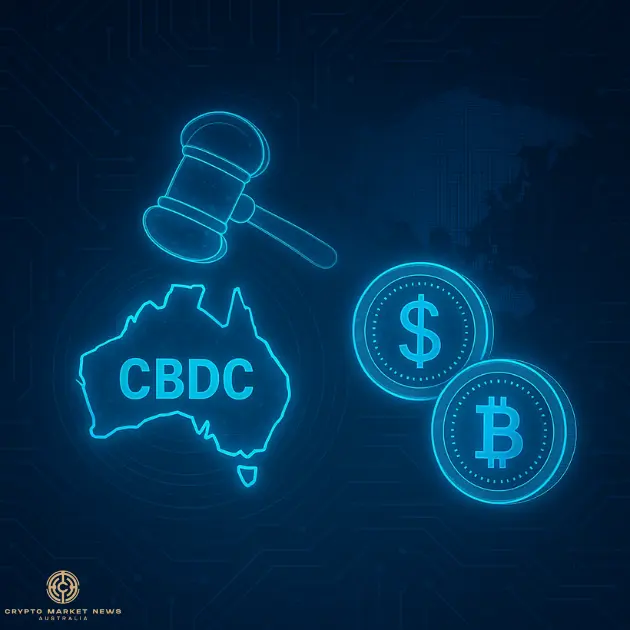After years of deliberation, the Australian government has been accelerating its digital asset infrastructure plans. The Treasury and various regulatory bodies have been busy draughting policies and conducting market-wide consultations, which have led to the development of CBDC pilots, stablecoin policies, and new crypto regulations aimed at providing the digital assets industry with bank-grade standards.
For Australians in the digital sector, much of this has been welcome news, as the government has been trying to ensure consumer protection while also easing the constraints Australians face, especially with the stringent crypto policies the banking system has put in place.
However, understandably, some of the developments have brought a few concerns, especially in terms of compliance for market players. So, how do the different government digital regulation and adaptation efforts stand, and what should you expect in the next few months?
Treasury’s wholesale CBDC Consideration
When cryptocurrency became popular, many countries began exploring the idea of a central bank digital currency (CBDC). Essentially, this is a digital version of the currency that central banks issue. It complements cash transactions and has the potential to facilitate quicker transfers while also embracing the ongoing digital revolution in payment systems.
However, only a few countries so far have gone ahead with the launch, limiting the project to pilots. In almost all cases, CBDCs haven’t proven popular, so many countries have simply embraced crypto through regulation.
In September 2024, the Reserve Bank of Australia (RBA) and Treasury released a report on their research on an Australian CBDC. One of the main conclusions from the study was that a ‘clear public interest case’ was yet to emerge in Australia. This means that the government is not actively pursuing a CBDC that individuals can use.
However, the report also stated that a wholesale CBDC version could be beneficial to the country. This is a version intended for institutional use, rather than individual, and it led to plans for ‘Project Acacia’, which were also announced through the same paper.
Project Acacia is a pilot run by the Reserve Bank of Australia (RBA) and the Digital Finance Cooperative Research Centre (DFCRC). It aims to explore how the country can adopt various forms of digital money and associated infrastructure (like blockchain) to support the development of wholesale tokenised asset markets. It’s supported by various stakeholders, including several banks, the Australian Securities and Investments Commission (ASIC), the Australian Prudential Regulation Authority (APRA), and the Australian Treasury.
In July 2025, the central bank announced that the project had entered experimentation phases with 24 innovative use cases. 19 of them involve real money and real asset transactions, while five are proof‑of‑concept (PoC) use cases involving simulated transactions. The pilot will run for six months, and the project findings are expected to be published in the first quarter of 2026.
If it’s successful, it could see Australia launch the wCBDC and chart a new future for financial transactions.
Stablecoins as part of the payment infrastructure
One of the key motivations behind the wCBDC is the popularity of stablecoins. To some extent, these are seen as a threat to traditional payment systems as they offer stable value and make transactions fast and cheap. They effectively eliminate the barriers that exist in international transactions and are therefore increasingly used for cross-border transfers and payments of goods and services.
The popularity of stablecoins has led many governments to enact stablecoin regulations, and the Albanese government has also been doing the same. Although it hasn’t created stablecoin-specific laws, ASIC released Consultation Paper 381 in December 2024 to update its Information Sheet 225: Crypto-assets.
In the paper, the regulator proposed to treat stablecoins, crypto-native tokens, wrapped tokens, and exchange tokens as financial products under Australia’s existing laws. The final review is expected to be published before the end of 2025, but over the years, Treasury and ASIC have also specified that stablecoins are effectively financial products under the law. This means that they operate under the financial and AML laws that apply to other traditional financial instruments and are therefore subject to AFS licensing.
However, the government is currently encouraging the use of AUD-backed stablecoins and has recently released an exemption for intermediaries dealing with stablecoins holding the AFSL. The instrument states that, if an issuer is already licensed by the AFS, crypto exchanges and wallet providers that list it don’t need the three licenses required under the Corporations Act 2001.
At the time of the release, the instrument only applied to the recently launched AUDM stablecoin, as it was the only one holding an AFSL licence.
However, going forward, we can expect to see more stablecoins seeking an AFSL to gain from the exemption.
“Bank-grade” rules for exchanges and custodians
Most countries, like the US, EU, and Hong Kong, have released stablecoin-specific laws. The US recently passed the GENIUS Act, Hong Kong passed the stablecoin ordinance in May 2025, and the EU regulated stablecoins under the MiCA framework in 2024.
However, the Albanese government has been taking a different approach. Instead of crypto-specific regulations, the government has been integrating crypto assets, such as stablecoins, into existing financial regulations.
The latest move in this regard is draft legislation released on 25 September 2025. The proposed legislation adds digital asset platforms and tokenised custody platforms to the Corporations Act 2001. In 2018, AUSTRAC also added crypto exchanges and other digital platforms to the existing Anti-Money Laundering and Counter-Terrorism Financing (AML/CTF) regulations.
This means that crypto exchanges, stablecoin issuers, and payment platforms are subject to the same standards as banks and other financial institutions. Essentially, “same activity, same risk, same regulation.”
What should Australians expect next?
The government’s ongoing regulation efforts will continue to narrow the gap between unregulated crypto and customer protection. The next few months will be significant, as the consultation period for the new draft law is set to end in October, and the final INFO 225 release is also anticipated around the same time.
The Project Acacia pilot will conclude in January 2026, with the findings expected to be released around March. These will be key in determining whether the government will pursue its own tokenised payments infrastructure that brings together blockchain and traditional finance.
Meanwhile, the recent regulatory updates indicate that crypto businesses will begin pursuing AFS licensing, which is likely to result in less stringent banking restrictions for Australians.

